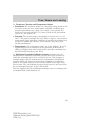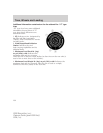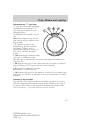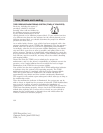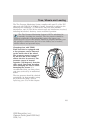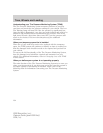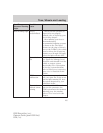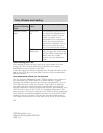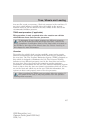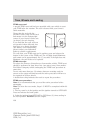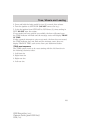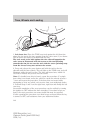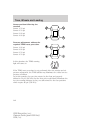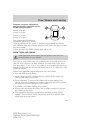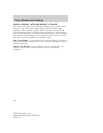
tires are flat, repair as necessary. Check air pressure in the road tires. If
any tire is under-inflated, carefully drive the vehicle to the nearest
location where air can be added to the tires. Inflate all the tires to the
recommended inflation pressure.
TPMS reset procedure (if applicable)
This procedure is only required after tire rotation on vehicles
with different front and rear tire pressures.
To determine if your vehicle requires two different pressures -
one for the front tires and one for the rear tires - refer to the
Safety Compliance Certification Label or Tire Label which is located on
the B-Pillar or the edge of the driver’s door. See Vehicle Loading in
this chapter for more information.
Overview
To provide the vehicle’s load carrying capability, some trucks require
different recommended tire pressures in the front tires as compared to
the rear tires. The Tire Pressure Monitoring System (TPMS) equipped on
this vehicle is designed to illuminate the Low Tire Pressure Warning
indicator at two different pressures; one for the front tires and one for
the rear tires. Since tires need to be rotated to provide consistent
performance and maximum tire life, the Tire Pressure Monitoring System
needs to know when the tires are rotated to determine which set of tires
are on the front and which are on the rear. With this information, the
system can detect and properly warn of low tire pressures.
Always perform the TPMS reset procedure after tire rotation. If
the system is not reset, it may not provide a low tire pressure
warning when necessary.
2008 Econoline (eco)
Owners Guide (post-2002-fmt)
USA (fus)
Tires, Wheels and Loading
137



